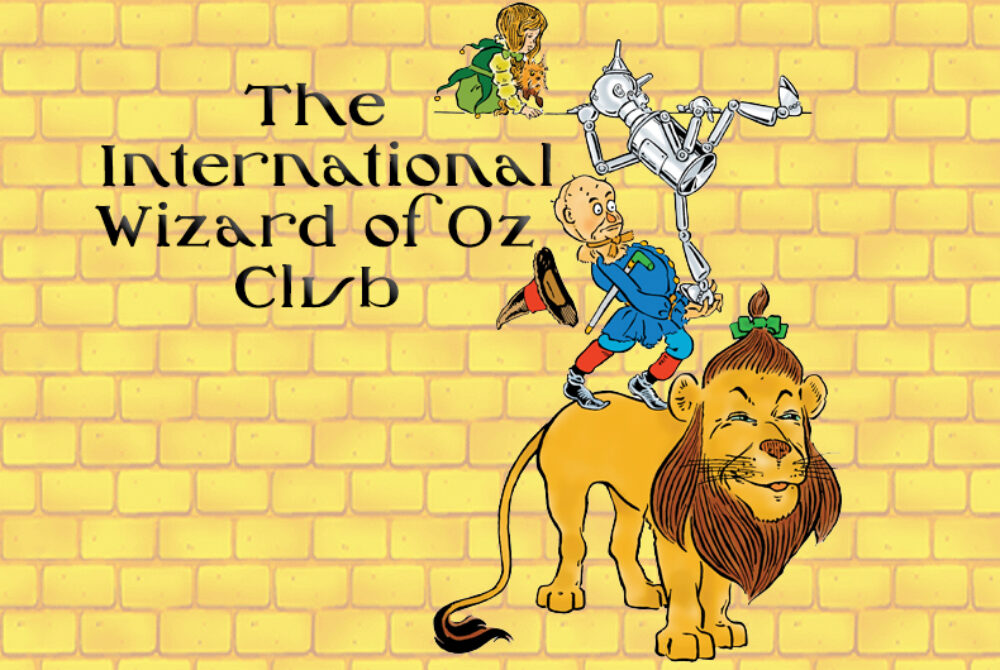 L. Frank Baum and the Macatawa Goose Man: Celebrating the origins of “The Wizard of Oz” In 1899, Baum published “Father Goose: His Book.” The collection of children’s poems exploded in popularity and provided Baum with wealth and prestige for the first time in his life, his great-grandson, Bob Baum, recalled. The author used the profits from his book to rent a large, multi-story Victorian summer home nestled on the southern end of the Macatawa peninsula on Lake Michigan. The home, which he eventually purchased, came to be known as the Sign of the Goose, an ever-present reminder of the fame that came along with “Father Goose.”
L. Frank Baum and the Macatawa Goose Man: Celebrating the origins of “The Wizard of Oz” In 1899, Baum published “Father Goose: His Book.” The collection of children’s poems exploded in popularity and provided Baum with wealth and prestige for the first time in his life, his great-grandson, Bob Baum, recalled. The author used the profits from his book to rent a large, multi-story Victorian summer home nestled on the southern end of the Macatawa peninsula on Lake Michigan. The home, which he eventually purchased, came to be known as the Sign of the Goose, an ever-present reminder of the fame that came along with “Father Goose.”
Around Town: There was a wizard among us In 1914, Kenneth Baum was an advertising executive with the Los Angeles Times. Kenneth, along with Harrison Gray Otis and Harry Chandler, was a founding member of the Los Angeles Times Automobile Club, “the first automobile club comprised entirely of newspaper men.” (See “Newspaper Club Formed,” L.A. Times, Nov. 21, 1915). By the 1930s, Kenneth started his own advertising business. He moved his family to Balboa Island, but by the 1950s, he was living here, in our town. In March of that year, his mother died at her home in Hollywood. (“Widow of ‘Oz’ Book Author Passes at 91,” L.A. Times, March 7, 1953). Less than a month later, Kenneth Baum died. He is buried near his parents at Forest Lawn Glendale.
Comic Conversion: The Wonderful Wizard of Oz It seems almost impossible to escape the over-narration problem with comic adaptations, at least those of classic novels, but Shanower manages to reduce it enough so that you’re not constantly wincing at artwork clogged with text. Shanower may have also kept a few too many of the off-shooting scenes, but he does offer those with no Oz experience outside the MGM movie a glimpse of the true depths of Baum’s characters. Young’s art is what really make this adaptation worthwhile. His illustrations enhance the whimsical fairy tale feel of the original book, giving the comic its own life and a leg to stand on amongst the many adaptations Baum’s work inspired. Baum’s book is a classic that all fans of children’s literature should read at some point (I’m ashamed to say I didn’t read it until adulthood), but Shanower and Young’s adaptation is still a fine means for jumping into the world of Oz.
Playhouse group to stage old-time radio ‘Wizard of Oz’ “This version of ‘The Wizard of Oz’ was originally presented as part of the Lux Radio program. Lux Radio Theater was a classic radio series that began broadcasting hour-long versions of Broadway plays and film adaptations in 1934. The shows often featured the original stars. ‘The Wizard of Oz’ was dramatized as a one-hour radio play on the Dec. 25, 1950, broadcast of Lux Radio Theatre, with Judy Garland reprising her 1939 film role.”

